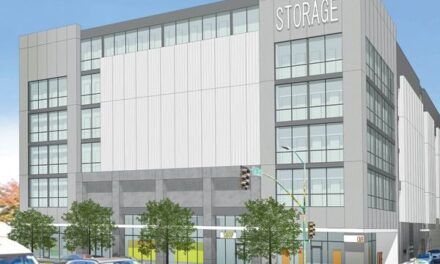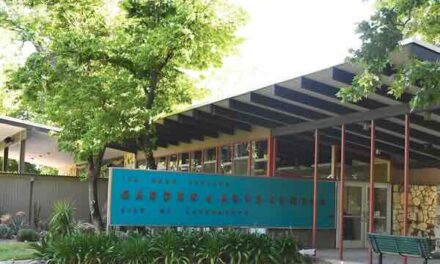Decision Time
Mayoral candidates answer questions on city’s future
October 2024
Inside publisher Cecily Hastings interviewed mayoral candidates Kevin McCarty and Flojaune Cofer, and recorded their responses to important questions facing the city. Interviews were separate, but both candidates responded to the same questions. Views on homelessness, business retention and Proposition 37 appeared in September editions of Inside Sacramento.
The city’s budget was balanced with one-time backfills after years of workforce pay raises and other unsustainable financial decisions by the City Council. Next year’s budget looks worse. What cuts do you foresee, knowing that the city’s biggest expense is public safety?
McCarty: I’m deeply troubled by our budget. When I was on the City Council 12 years ago, I supported the Measure U sales tax to support restoring city services after the Great Recession. The fact that we need to make these tough cuts and one-time backfills is very disturbing.
Our biggest expense is public safety—representing 80% of the discretionary city budget (general fund)—with another 10% for parks. All the core things that constituents count on. Our only way out is to grow and create new jobs, lower the regulatory processes, and focus on clean and safe neighborhoods by addressing public safety and homelessness.
Cofer: A lot of the deficit we have this year is based on staff pay increases that were approved in December 2023, two weeks before the city manager’s office announced the $66 million deficit. Why did it play out this way? I have lots of questions.
One of my goals for the council is to establish goals for the city departments to manage their budgets and staff. Secondly, before we get cuts, I also make sure we maximize our revenues.
That’s a conversation that our city should be having regularly. How do we get more money? And it is also important to see how many times a dollar turns over in Sacramento.
Every time I’m at Golden 1 Center and I see people spending $17 on Budweiser or Heineken, I think to myself, couldn’t you be spending that money on a local brewery that would then reinvest in our community and turn that dollar over one more time?
But we have more than $1 billion in deferred maintenance, and so we have real challenges with long-term solvency and how we’re going to build up the funds and where we’re going to spend money now.
While I do not want to contract out city services, I do want us to regulate employee overtime. I’ve been clear I do not want to lay any city staff off, but we must spend our labor dollars efficiently towards public safety outcome goals.
Cities across the U.S. report increased traffic fatalities and traffic-related injuries coinciding with lower levels of traffic enforcement by police. How can Sacramento make streets safer with decreased levels of traffic enforcement?
McCarty: I support an increase in traffic enforcement. I also support technology and smart and thoughtful street design that creates more pedestrian and cycling safety.
But it must be noted that most of the fatalities occur in parts of the city where people need to walk or cycle to work, not by choice but because they cannot afford to drive a car.
Cofer: Traffic enforcement is very similar to law enforcement. As a preventative, we need to use traffic safety measures in the design of our streets that encourage safety to pedestrians. Not wait until an accident happens.
We need to invest in the things that yield better safety outcomes. We must better use our city dollars to leverage grants on the state and federal levels.
Mayors Kevin Johnson and Darrell Steinberg believed the city needed a “strong mayor” charter amendment to give them executive authority over the city. Will you pursue a “strong mayor” initiative in the next four years?
McCarty: I opposed all the previous strong mayor measures. I don’t see the voters wanting that, either. Some strong mayor cities have experienced corruption and cronyism. We need to use a collaborate approach to help solve our challenges. I’ve been successful over the years working with my colleagues and will be successful as your mayor.
Cofer: I opposed the last efforts for a strong mayor put forth by Mayor Steinberg. I reject the framing of strong mayor vs. weak mayor. I think it’s better described as an executive mayor vs. a collaborative mayor. Collaboration means we must work together to get things done. And when you do that, more people have buy-in.
With so much Downtown real estate controlled by the state and mothballed since the pandemic, what’s your plan to activate state buildings or move them into private or city hands to revitalize the Downtown core?
McCarty: More than 50% of our Downtown buildings are on the state tax rolls and they pay zero property tax. So, in the best of times, Downtown only created revenue because the workers generated revenues with their sales tax at lunch and happy hour and going shopping at the mall. Now we have neither and it is an existential threat to the core of Sacramento.
The first thing we need to do is get the state-owned real estate off the government rolls and into the private sector to be developed for housing and other uses. Gov. Newsom signed into law a bill I authored to make it easier to turn state property into housing. But we also need to streamline our development process to make the process more efficient and less costly.
But it’s just a piece of the puzzle. We need to focus on bringing more activity, such as a campus with programs and housing that can benefit being near the Capitol.
Cofer: We need to turn Downtown into a campus, one that is full of thriving college dormitories. We also need to create Downtown as the entertainment center for the region and as a great place for people to come and have lots of fun.
What are the businesses that we need to attract to the area so we’re taking advantage of how people want to engage with Downtown—but also making sure that we’re meeting the needs of our region? The future of our Downtown is one that is full of young people, open and available and with good public transit.
Mayors Joe Serna and Kevin Johnson created education initiatives and ran candidates for school board, knowing the city’s future depends on its children. How will you make an impact with Sac City Unified and its superintendent and board?
McCarty: I’ll see that the city partners with our school districts, not only Sac City, but the others in the city as well. I’ll support candidates for school board as I have done in the past. I want to elect school board members who will make tough and important decisions for our schools and our kids. Sometimes I’ve supported teacher-union backed candidates. Other times, I’ve supported candidates who are independent.
Having vibrant programs to support and develop our youth is one of my three top priorities as mayor.
Cofer: I’m the daughter of two public school teachers. Education is obviously incredibly important to me. I’m really excited about the potential for partnerships with our city.
We need to work with the libraries because we have issues with our third-grade reading levels. I want a citywide book club. We need to partner with businesses and the unions and others to recruit young people as they’re getting ready to graduate from high school. We need to partner with Regional Transit on transportation passes.
Rio City Café recently closed after 30 years of service in Old Sacramento. The city is the landlord and refused to pay for repairs to the outdoor dining deck, erasing 70% of the cafe’s revenues. How will you reconcile the closure of this iconic restaurant with the city’s decades-long attempts to revitalize Old Sac?
McCarty: It’s a total shame. It’s a black eye for the city. We have a Major League Baseball team coming next year, and this is one of our marquee blocks on the river. We can’t have a vacant hole on our Old Sacramento riverfront.
This is on both Mayor Steinberg and City Manager Howard Chan. We needed to fix this and find money in the city budget to do it months ago. By not fixing this situation, the city will be losing money every month.
Cofer: This is one of those awful situations where again, as a city, we are speaking out of both sides of our mouth. On the one hand, we are trying to attract business and we’re trying to make Downtown and especially our waterfront a destination. But on the other hand, we have more than $1 billion in deferred maintenance.
Now we’re seeing an iconic restaurant close. And that’s on the city. We should be apologizing and creating a plan so this never happens in the future.
Cecily Hastings can be reached at publisher@insidepublications.com. Follow us on Facebook and Instagram: @insidesacramento.
















